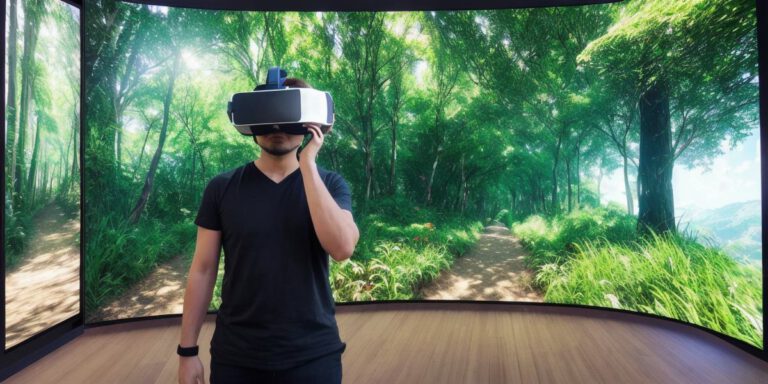Why is Virtual Reality (VR) Successful? Key Factors and Future Potential

Virtual reality has been gaining immense popularity over the past few years, with the market size projected to reach USD 274.5 billion by 2026. This growth can be attributed to several factors, including technological advancements, growing consumer demand, and a wide range of potential applications. In this article, we’ll explore the key factors contributing to the success of virtual reality and discuss its future potential.
1. Immersive Experiences
One of the primary reasons for VR’s success is its ability to provide highly immersive experiences. By wearing a VR headset, users can enter a completely different environment, allowing them to interact with virtual objects and characters in ways that are not possible in the real world. This level of immersion has led to a range of applications in various fields, including gaming, education, and healthcare.
2. Technological Advancements
Technological advancements have played a significant role in VR’s growth. The development of high-resolution displays, motion tracking sensors, and powerful processors have made it possible to create more realistic and interactive virtual environments. Additionally, advances in wireless technology have allowed for more freedom of movement, enabling users to explore virtual worlds without being tethered to a computer or console.
3. Growing Consumer Demand
As virtual reality technology has become more accessible and affordable, consumer demand has grown significantly. This can be seen in the rise of gaming consoles like the Oculus Quest 2 and the PlayStation VR, as well as in the increasing popularity of applications like social media platforms and educational tools. The growing interest in VR is driven by a desire for new and exciting experiences, as well as the ability to escape from everyday stresses.

4. Wide Range of Applications
Virtual reality has a wide range of potential applications across various fields, including gaming, education, healthcare, tourism, and more. In gaming, VR provides a highly immersive experience that allows players to feel like they are truly a part of the game world. In education, VR can be used to create virtual classrooms where students can learn in a more engaging and interactive way. Healthcare applications include using VR for therapy, pain management, and surgical training. The potential for VR to revolutionize various industries is virtually limitless.
Future Potential of Virtual Reality
Virtual reality’s success is only expected to continue in the coming years. As technology continues to advance, we can expect even more immersive experiences that will blur the line between reality and virtual worlds. Additionally, the increasing adoption of 5G technology will enable faster and more reliable wireless connections, further enhancing VR’s capabilities.
The potential for VR to revolutionize various industries is only just beginning. In education, we can expect more immersive learning experiences that allow students to explore complex concepts in a more engaging way. In healthcare, VR can be used to create virtual reality therapy programs for patients with mental health issues and provide surgical training for doctors. In tourism, VR can be used to create virtual tours of museums, historical sites, and other landmarks, allowing people to explore these locations from the comfort of their own homes.
FAQs
- What is the future of virtual reality?
Virtual reality’s future looks bright as technology continues to advance. We can expect even more immersive experiences that will blur the line between reality and virtual worlds. The increasing adoption of 5G technology will also enable faster and more reliable wireless connections, further enhancing VR’s capabilities. - How does virtual reality work?
Virtual reality works by using sensors to track a user’s movements in real-time. This data is then used to create a virtual environment that the user can explore








